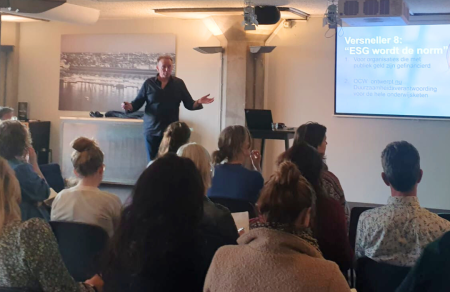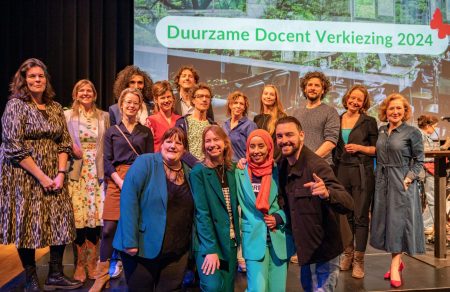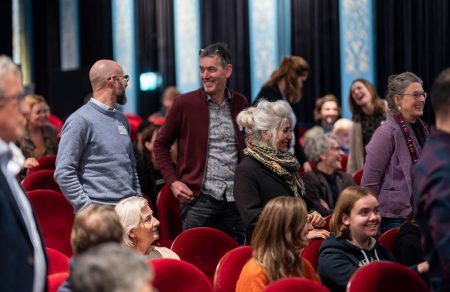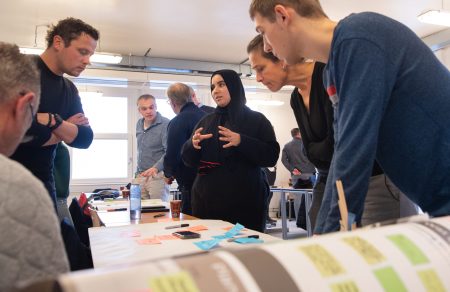General
In this small book (over 55 pages A 5), the author arrives at some survival principles from nature that she believes are applicable to human organizations. Is this then necessary, one may ask. From the introduction: 'For organizations and our economy have a other paradigm is needed. A new perspective that does justice to the complexity of our society. A more systemic view with an eye for the mutual relationships and the dynamics therein. As far as I am concerned, ecology as a science is ideally suited for that systemic tin'. To this, a right-thinking person can agree.
This idea - using principles from nature for organizational development - does not come out of the blue. Back in 2010, Ken Webster and Craig Johnson published their - much more comprehensive and systematic - book "Learning from Nature. In it, the author of "Flourishing Again" orients herself to one aspect of human society: its organizations. She does so in a frank, personal way: scientific knowledge mixed with her own experiences. This makes the booklet attractive.
Completeness is not sought by the author. She limits herself to three main topics: the core (purpose and mission), the environment (strategy, partners, chain, surroundings) and the values (culture, basic attitude, relationship network). Topics such as international trade or geopolitical relations and tensions, which you might expect to see in Part 2 (the environment), are not covered. Putting what is discussed into practice at a single organization is complex enough, the thinking must have been. But a fourth headtopic would not have been out of place (although certainly mentioned here and there in the others): keeping an organization's employees active, productive and satisfied.
The most charming - and relevant to me - is the third part, on values. Its essence is about optimization and maximization. The latter is still pursued by the human economy, despite the undeniably stronger ecological "feedbacks" (problems), which should force moderation and adaptation (optimization). Ecosystems do not do maximization; they - and their species found in them - adapt to changing conditions. The author: 'Anyone who has a fruit or nut tree in the garden knows that the tree's "production" is highly dependent on factors such as drought and temperature. Some years production is higher than others, and this is to prevent the tree from exhausting itself in less favorable conditions. In nature, 'maximum' is a dangerous strategy ....'.
Usability
The booklet has a substantial, bold ambition: to help organizations, with the help of natural principles,function well (or better). That, to me, is quite a bit different - more exciting - than looking closely at a kingfisher's beak to fabricate the nose of a Japanese high-speed train - the image of biomimicry some 20 years ago. There is much more to be said from these natural relationships than has been described here. By the way, the author will have chosen her outline with care, is my suspicion: to give a brief but powerful overview of the main possibilities. For not for nothing does she refer to - much more extensive - books such as 'Networking with energy' by Eelke Wielinga and Sjoerd Robijn and to 'Learning from nature'(authors: see above); and others.
So I see this booklet primarily as a wake-up call to look at what goes on in one's own organization from a point of view - probably little or unfamiliar to many. Whether that is (in the sphere of NME) a school, or an NME center, a nature museum or a visitor center; it applies everywhere. In that respect, it can play a good role in an organization working on the concept of Whole Institution Approach, a somewhat broader strategy than the so-called. Whole School Approach (see this link). After all, there - in order to work more sustainably - the entire organization, management of buildings, equipment and the like also play a pronounced role.
One comment on the usefun has yet to be made. I do get annoyed by the many language, formatting and typographical errors in the booklet. Whatever the reason, the author would do well to hire an editor-in-chief for the next printing. But linguistically rather sloppy, it does not detract from the importance of the content. And therefore remains very much worth reading.







